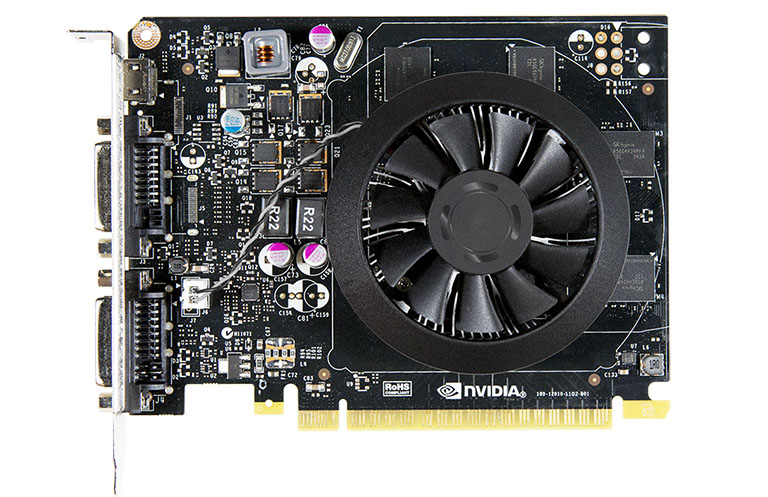The reference card
The headline-grabbing feature is the energy efficiency. Using no more than 60W at full chat, the reference GTX 750 Ti 2GB measures only 6in long and uses a basic fan for cooling duties. There's every possibility that Nvidia's add-in board partners will produce passively-cooled models equipped with card-wide heatsinks.
Reference GTX 750 Ti cards clock in at 1,020MHz core, rising to an average 1,085MHz under GPU Boost 2.0, and memory humming along at an effective 5,400MHz. Nvidia believes the GTX 750 Ti is too low rent to have SLI compatibility, which is a shame as two cards would pave the way for an inexpensive dual-GPU system.
Four 4Gb memory chips are provided by Hynix - model number H5GC4H24MFR-T2C - and rated to either 5Gbps (1.35V) or 6Gbps (1.5V), suggesting that, specified at 5.4Gbps here and presumably running at 1.5V, overclocking potential will be good. It needs to be, too, as, reiterating a point from the first-page exposition, the card uses a 128-bit memory interface that may well play against it once the resolution and image-quality settings are increased.
Nvidia's reference cooler stands two slots high and goes against the grain of form factors for low-power GPUs. We've been informed that partners will have free rein to design their own PCBs, opening up the way for single-slot and half-height cards equipped with smaller IO panels.
Speaking of which, Nvidia's preferred outputs are two dual-link DVI and mini-HDMI. The underlying GPU can drive four displays simultaneously, mind, so expect to see a few AIB cards also touting a DisplayPort connection.












